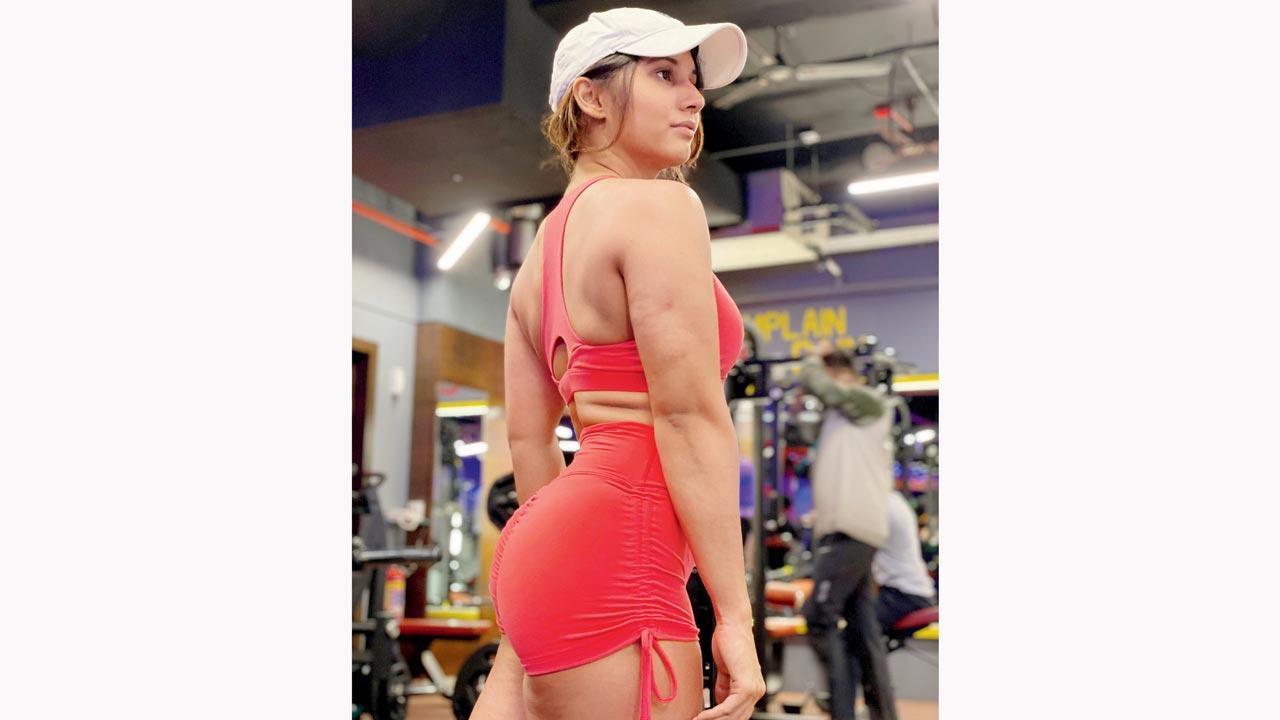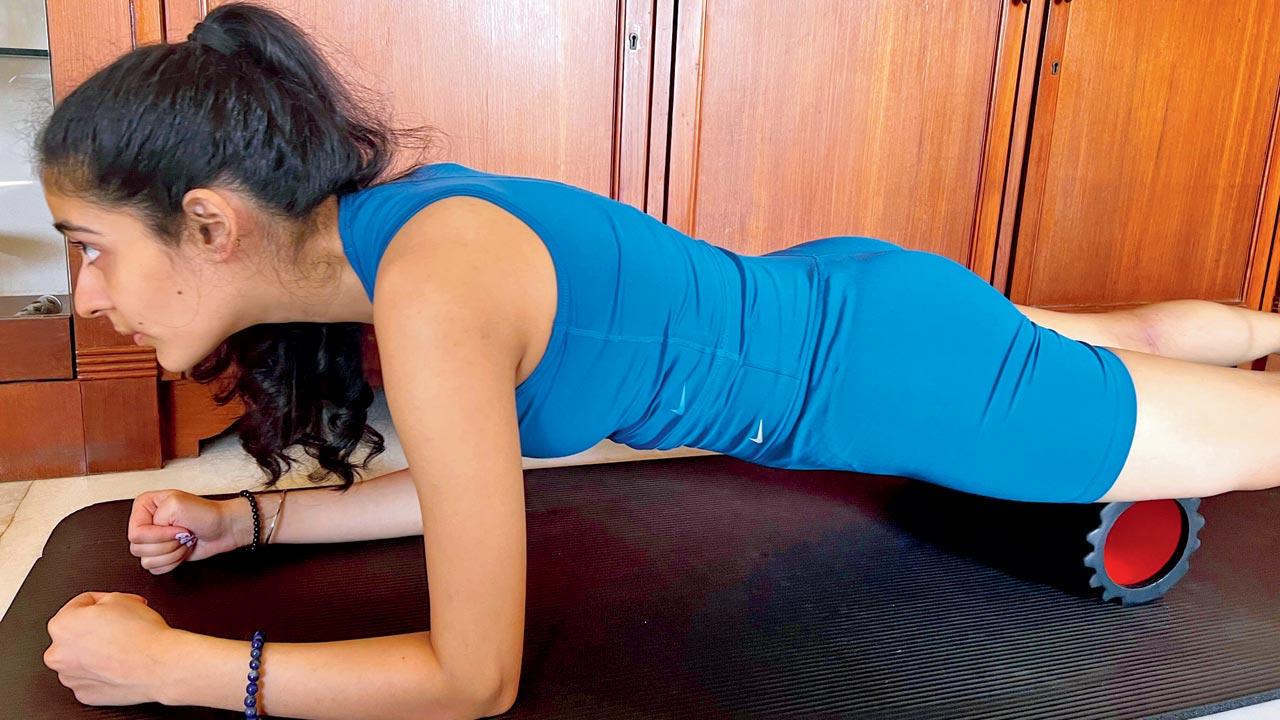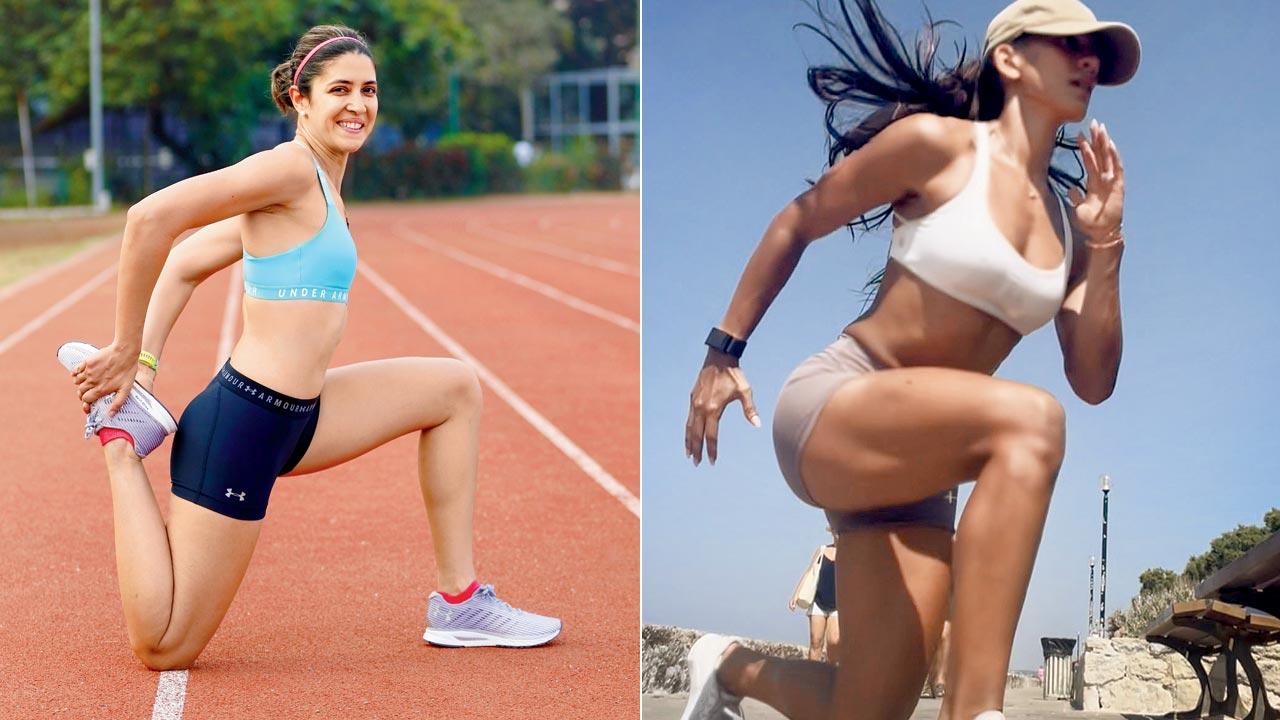Cryotherapy, muscle compression, fitness bands, and ice-baths—recovery after exercise is a science on its own, and a great way to stay fit

Tanya Khubchandani Vatsa, the founder of Elixir Wellness, standing outside the cryotherapy machine that the centre uses to treat muscle inflammation. The machine is cooled to -190C for the three-minute session; (right) Normatec compression involves a sleeve-like pouch for the legs and arms. It uses pressurised air pockets to massage the limbs. Pics/Anurag Ahire
Ice baths may seem like just another social media challenge, but fitness freaks have been doing it before it was cool. Last week, Rohan Bopanna, who made history as the world’s oldest Grand Slam winner at 43, talked about using ice baths to recover from on-field sessions. Dunking your entire body in freezing water apparently gets the muscles back in working shape by reducing inflammation, swelling, and soreness. But this technique is one of the basic ones in exercise recovery, the practice of helping the body recuperate after intense activity.
Maulika Sharma, a certified recovery specialist, says that many people are fit but don’t know how to recover from fitness activities. Sharma, who’s been training since she was in college, says that she started recovery therapy when she didn’t feel as fit as she looked. “Recovery is not about taking rest, but more so about flexibility, mobility and understanding how to reduce inflammation and oxidative load,” she says. “I noticed that many fit-looking people in the gym are actually injured—they suffer from lower back pain, shoulder problems, and knee issues.” Sharma, who is also a nutritionist and strength and conditioning coach, personally loves ice-baths and needling therapy, to reduce inflammation and trigger point release.
 Maulika Sharma, an exercise recovery specialist, says ice baths can help heal the muscles after intense workouts
Maulika Sharma, an exercise recovery specialist, says ice baths can help heal the muscles after intense workouts
These specialised treatments, which are an offshoot of physiotherapy and sports medicine, have traditionally been used by elite athletes with the funds and exposure to such treatments. “When ex-England cricket captain Michael Vaughan was here for the World Cup, he did cryotherapy every single day for three weeks,” says Tanya Khubchandani Vatsa, Founder of Elixir Wellness centre at Peddar Road. “He loves ice baths and cryotherapy, and he would stop for a session on his way to Wankhede stadium.”
A three-minute cryotherapy session costs R4,900, and involves standing in a chamber with an internal temperature of minus 190 degrees Celsius to treat inflammation. It’s like an ice bath, but faster. “Three minutes of cryotherapy is equal to 21 hours in an ice bath, in terms of the effect on inflammation,” Vatsa explains. “In an ice bath, you are in a crouched position due to the shock of the water hitting you, which might harm your back muscles.”
 Yoga instructor and fitness coach Jiyaajit Kaur Sethi uses foam rollers to soothe her muscles after a workout
Yoga instructor and fitness coach Jiyaajit Kaur Sethi uses foam rollers to soothe her muscles after a workout
Elixir Wellness started in 2021 with IV therapy and later branched out into exercise recovery treatments. The centre offers a range of services, including normatec compression therapy, which involves compressing the muscles with air pockets, and hypervolt trigger point release, in which sore muscle points are targeted with a percussion gun that emits pressure and vibrations. Hyperbaric oxygen treatments are 75-minute sessions that cost R6,500, and involve sitting in a US FDA-approved chamber that goes up to three times atmospheric pressure and breathing pure oxygen through a mask.
There are also high-tech devices that help keep track of the body’s recovery status. Pareesha Ruia, a fitness coach and Pilates instructor, swears by the Whoop band, which keeps track of your calories and quality of sleep the night before. “The greatest feature is that is has a journal—you can fill in things such as, ‘I did red light therapy yesterday’ or ‘I had a massage the day before’, and it will tell you which therapies have worked best, or what is boosting recovery over others,” says Ruia, who has also tried normatec compression and red light therapy, which uses low wavelength red light to stimulate tissues.
 Ayesha Billimoria, a track-and-field athlete, says acupuncture, physiotherapy, and massages are her form of exercise recovery; (right) Fitness coach and Pilates instructor Pareesha Ruia uses a fitness band to track her sleep patterns and levels of recovery
Ayesha Billimoria, a track-and-field athlete, says acupuncture, physiotherapy, and massages are her form of exercise recovery; (right) Fitness coach and Pilates instructor Pareesha Ruia uses a fitness band to track her sleep patterns and levels of recovery
What these therapies boil down to, at the end of the day, is learning to slow your body down, which is equally important as heating it up with exercise. Track and field athlete Ayesha Billimoria, known as Fit Girl India on Instagram, says recovery has to be personalised to every individual. “My recovery involves acupuncture once a month, and massages and phsyiotherapy twice a month,” the two-time national gold medallist says. “Once in a while, I use normatec compression, a 20-minute therapy that gives you instant relief both before and after a workout.” She also uses the Hyperice hypervolt gun to target tight muscle points, and on a regular basis, she says infrared therapy helps reduce inflammation in the joints.
However, she feels that recovery can be found in simple things, such as massages and stretching. “Because of the [ease of] availability of these techniques, people are not taking care of their bodies…,” she says, “they’ll stretch for five minutes and jump into a cold bath, or take a massage gun. However, you should be stretching diligently. We forget that our body itself has so much power to heal.” Sharma says that these quick techniques are for short-term relief—deep tissue massages and mobility training are what helps muscles stay fit and fine in the long run.
Furthermore, these specialised treatments and equipment are not easily accessible and cost-effective to the lay person, as are other avenues of exercise recovery. Jiyaajit Kaur Sethi, a nutritionist, yoga, and fitness instructor, says foam rolling helps her. A foam roll is a cylindrical roll covered in rubber or plastic. When rolled along the body, it helps broken muscle tissues to interact with more blood flow. She also uses yoga for recovery because it involves breathwork and “training your muscles to listen to your breathing”. Sharma swears by deep breathing techniques: “It may sound simple, but breathwork—breathing from the stomach upwards instead of shallow surface breathing—is one of the easiest ways to boost overall health.”
 Subscribe today by clicking the link and stay updated with the latest news!" Click here!
Subscribe today by clicking the link and stay updated with the latest news!" Click here!










